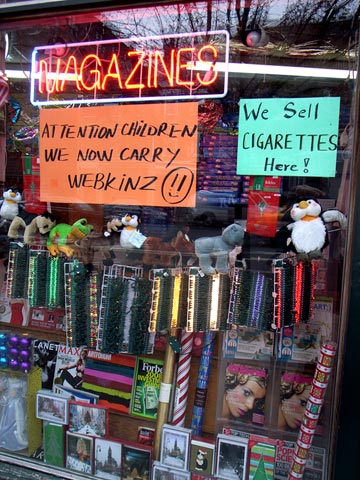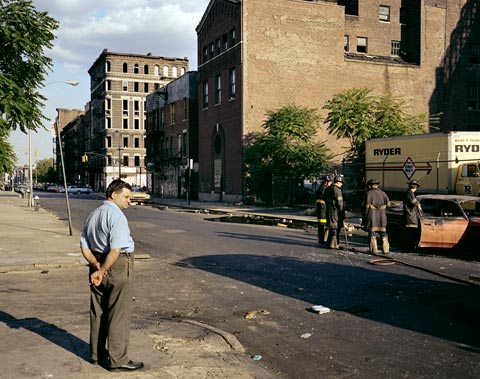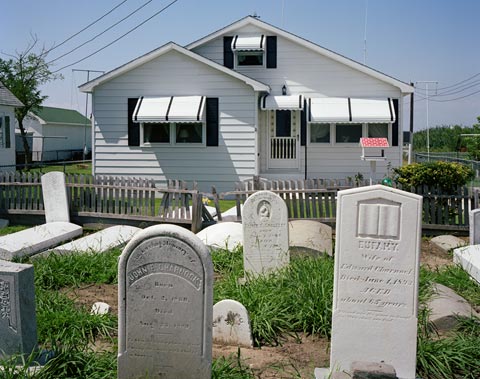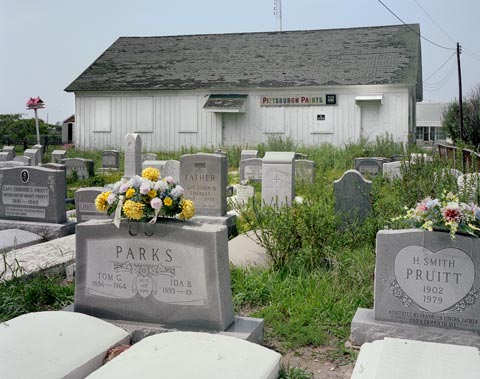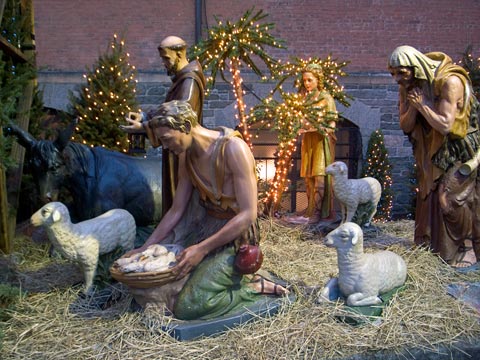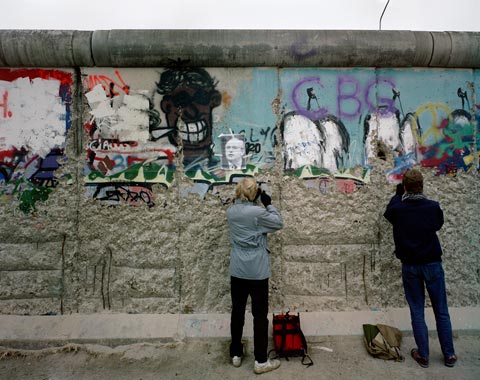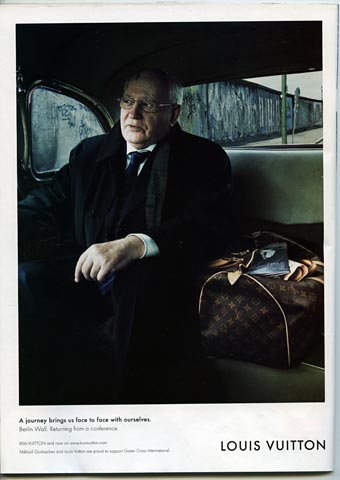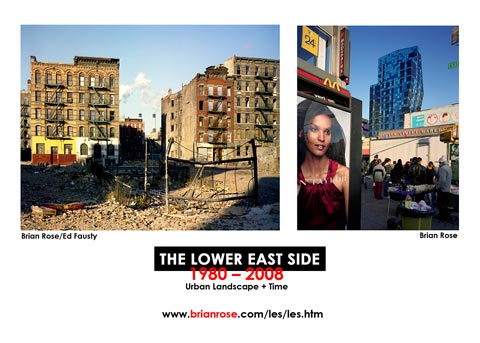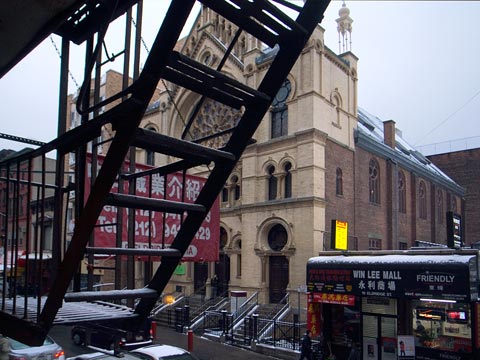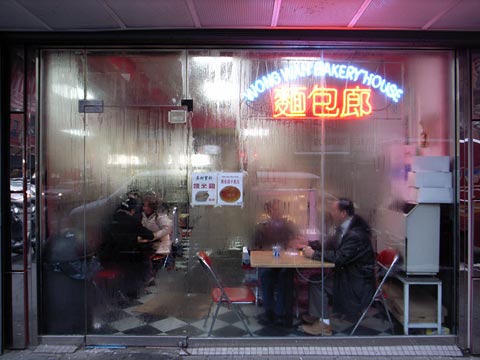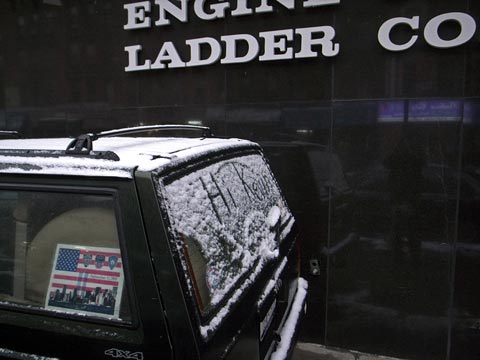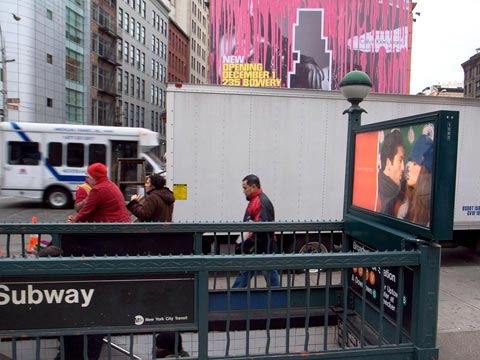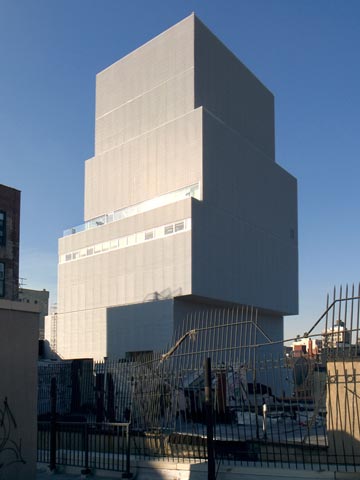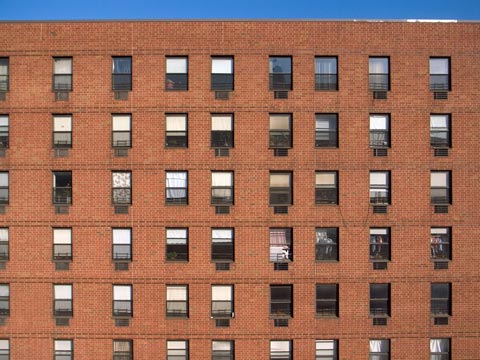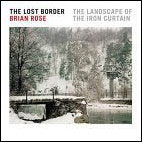New York/New Museum
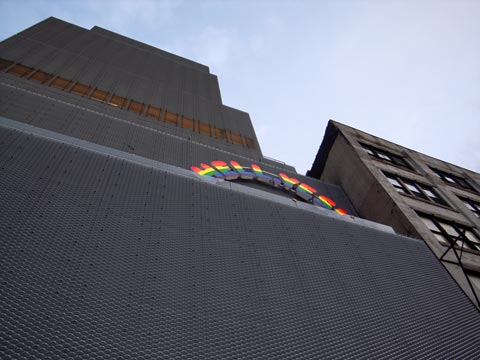
The Museum (Hell Yes! - Ugo Rondinone)
The installation encapsulates the philosophy of openness, fearlessness, and optimism that surrounds the New Museum’s reemergence in the contemporary art community, as well as its history as the home of socially committed contemporary art. -- The New Museum website
I finally got to the New Museum the other day braving the holiday crowd that has pressed into this out of whack wedding cake of a building since it opened a month ago. I've already written about the exterior architecture, which fits admirably into the polyglot of the Bowery. If there's ever a place where anything goes, this is it.
Inside, the building is less arresting, somewhat sober, a series of white containers for art. The offset setbacks of the exterior allow for unobtrusive skylights, which supplement fluorescent tube lighting. I've never cared for this kind of "European lighting"--you see it lots of galleries over there--but it works fine for the sculptural pieces in the opening exhibition "Unmonumental." For most wall art I prefer spots.
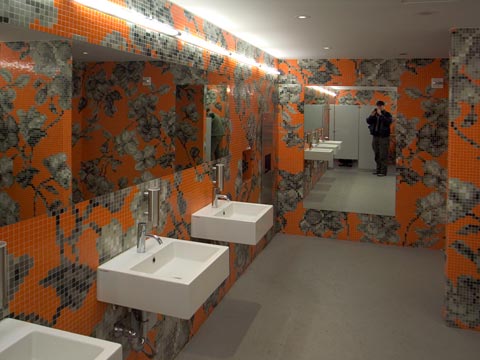
The New Museum
No photography in the galleries, so we'll settle for a restroom view.
The New Museum has none of the luxe quality of the Museum of Modern Art, and I have no problem with that. The architects' make only a few signature gestures, most notably the narrow stairs linking three floors of galleries. It's just wide enough for two people to pass going up and down, and it reminded me how the old Modern once featured a human scale staircase as an important element of circulation. (I think it's still there, actually, lost in the hustle and bustle and endless escalators.)

Museum of Modern Art, photo via CitySpecific
I was pleasantly surprised to see a rather accessible and generous opening exhibition at the New Museum. Surprised, because so much art these days is coded for the smug acknowledgment of the select few or panders to the titillation of the semi-sophisticated. Unmonumental is the apt title of the exhibit, which can be loosely described as assemblage art, three-dimensional constructions often made from disposable bric-a-brac. It's a sculpture show.
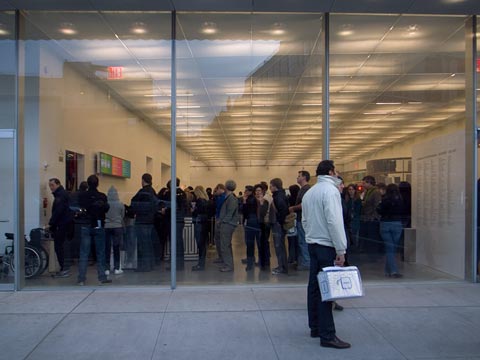
The New Museum holiday crowd
I won't go into the specific pieces--not as long as picture taking is forbidden in the galleries--but I found much of it freshly energetic, clever without being off putting, and just a lot of fun to rummage through. There were too many people in the museum for a leisurely visit, and we'll see if the crowds continue after the first of the year.
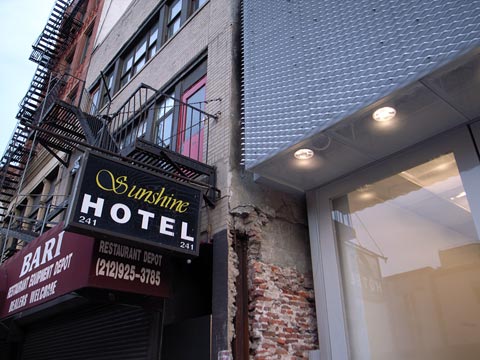
The Sunshine Hotel adjacent the New Museum
One of the last Bowery flophouses
I went when I did because they were screening a documentary about the Bowery, where the museum is located, and which forms the western periphery of my Lower East Side project. The film presented the history of the street from its days as the road to Peter Stuyvesant's farm to a last stop skid row. Except for a few hangers on in places like the Sunshine Hotel, there are no more Bowery bums.
